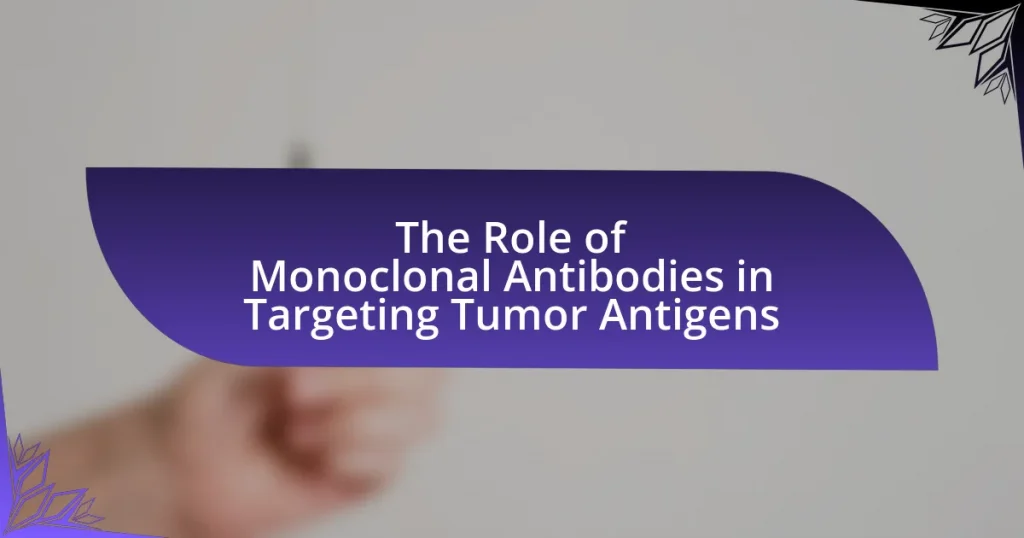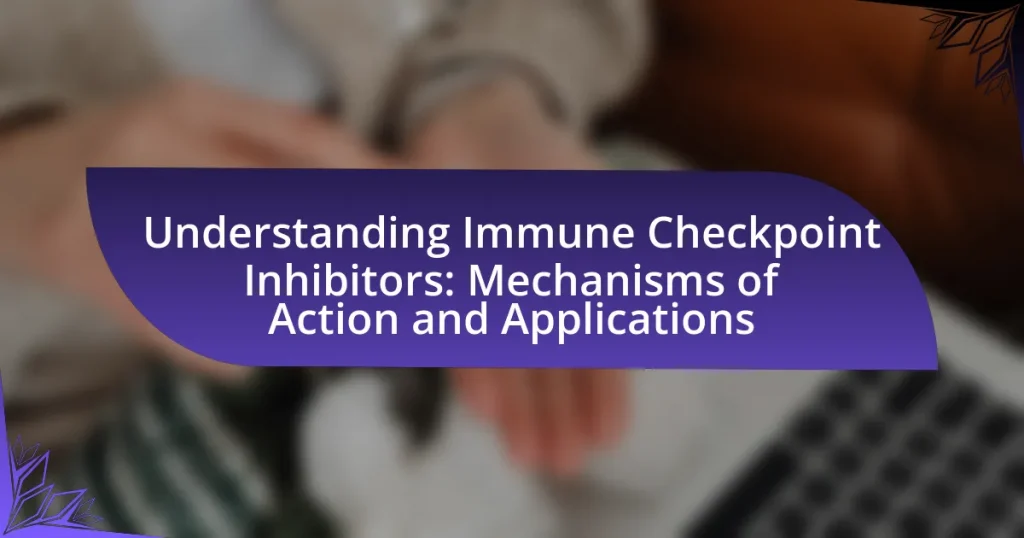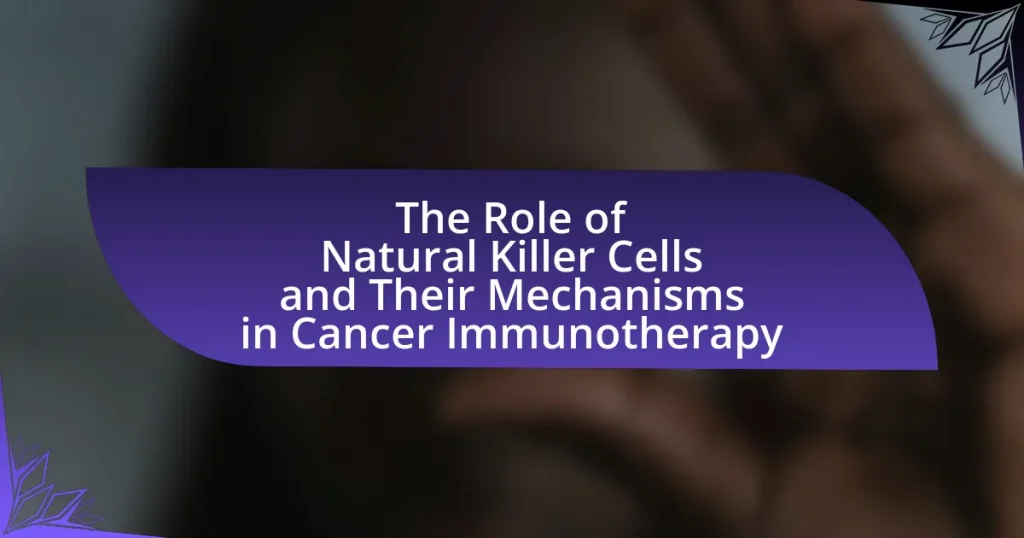Antibody-Drug Conjugates (ADCs) are innovative cancer therapies that combine monoclonal antibodies with cytotoxic drugs to selectively target and destroy cancer cells while minimizing damage to healthy tissues. This article explores the mechanisms of action of ADCs, detailing their components, including antibodies, cytotoxic drugs, and linkers, and how these elements work together to enhance therapeutic efficacy. It also examines the differences between ADCs and traditional chemotherapy, the significance of ADCs in modern medicine, and the challenges associated with their use, such as specificity, toxicity, and resistance. Additionally, the article highlights recent advancements in ADC technology and best practices for optimizing treatment plans, emphasizing the importance of patient selection based on tumor characteristics and biomarker expression.
-1.webp)
What are Antibody-Drug Conjugates (ADCs)?
Antibody-Drug Conjugates (ADCs) are targeted cancer therapies that combine an antibody with a cytotoxic drug to selectively deliver the drug to cancer cells. The antibody component binds to specific antigens expressed on the surface of tumor cells, facilitating the internalization of the drug, which then exerts its cytotoxic effects directly within the cancer cell. This targeted approach enhances the therapeutic efficacy while minimizing damage to healthy tissues, as evidenced by the clinical success of ADCs like Trastuzumab Emtansine in treating HER2-positive breast cancer.
How do ADCs differ from traditional therapies?
Antibody-drug conjugates (ADCs) differ from traditional therapies primarily by combining targeted antibody delivery with cytotoxic agents, allowing for selective destruction of cancer cells while minimizing damage to healthy tissues. Traditional therapies, such as chemotherapy, typically administer cytotoxic drugs systemically, affecting both cancerous and normal cells, which often leads to significant side effects. In contrast, ADCs utilize monoclonal antibodies that specifically bind to antigens expressed on the surface of tumor cells, delivering the cytotoxic drug directly to the target, thereby enhancing efficacy and reducing systemic toxicity. This targeted approach has been shown to improve therapeutic outcomes in various cancers, as evidenced by the FDA approval of multiple ADCs, such as trastuzumab emtansine for HER2-positive breast cancer, which demonstrates improved survival rates compared to traditional chemotherapy regimens.
What components make up an ADC?
An Antibody-Drug Conjugate (ADC) is composed of three main components: an antibody, a cytotoxic drug, and a linker. The antibody specifically targets cancer cells, allowing for selective delivery of the cytotoxic drug, which is designed to kill those cells. The linker connects the antibody and the drug, ensuring stability in circulation while allowing for release of the drug once the ADC is internalized by the target cell. This structure enhances the therapeutic efficacy of the drug while minimizing systemic toxicity, a critical aspect of ADC design.
Why are antibodies chosen for drug conjugation?
Antibodies are chosen for drug conjugation due to their high specificity and ability to target specific antigens on cancer cells. This targeting capability enhances the therapeutic efficacy of the drug while minimizing damage to healthy tissues. For instance, studies have shown that antibody-drug conjugates can deliver cytotoxic agents directly to tumor cells, resulting in improved treatment outcomes in various cancers. The selective binding of antibodies to their respective antigens allows for a more precise delivery mechanism, which is crucial in reducing side effects associated with conventional chemotherapy.
What is the significance of ADCs in modern medicine?
Antibody-drug conjugates (ADCs) are significant in modern medicine as they provide targeted cancer therapy, enhancing the efficacy of treatment while minimizing damage to healthy tissues. ADCs combine monoclonal antibodies with cytotoxic drugs, allowing for precise delivery of chemotherapy directly to cancer cells. This targeted approach has been shown to improve patient outcomes; for instance, the FDA approved ADCs like trastuzumab emtansine for HER2-positive breast cancer, demonstrating improved survival rates compared to traditional therapies. The specificity of ADCs reduces systemic toxicity, making them a vital advancement in oncology.
How do ADCs target specific cancer cells?
Antibody-drug conjugates (ADCs) target specific cancer cells by utilizing monoclonal antibodies that bind to unique antigens expressed on the surface of those cells. This targeted binding allows the ADC to deliver cytotoxic drugs directly to the cancer cells while minimizing damage to healthy tissues. For instance, the ADC brentuximab vedotin targets CD30, a protein found on certain lymphoma cells, effectively delivering the drug to those specific cells. This mechanism enhances the therapeutic efficacy of the drug while reducing systemic toxicity, as evidenced by clinical trials demonstrating improved outcomes in patients with CD30-positive malignancies.
What advantages do ADCs offer over conventional chemotherapy?
Antibody-drug conjugates (ADCs) offer targeted delivery of cytotoxic agents, significantly reducing damage to healthy tissues compared to conventional chemotherapy. This targeted approach enhances the therapeutic index, allowing for higher doses of the drug to be delivered directly to cancer cells while minimizing systemic toxicity. Studies have shown that ADCs can improve response rates and overall survival in certain cancers, such as breast cancer and lymphoma, by specifically binding to tumor-associated antigens. For instance, the ADC trastuzumab emtansine has demonstrated improved outcomes in HER2-positive breast cancer patients compared to standard chemotherapy regimens.
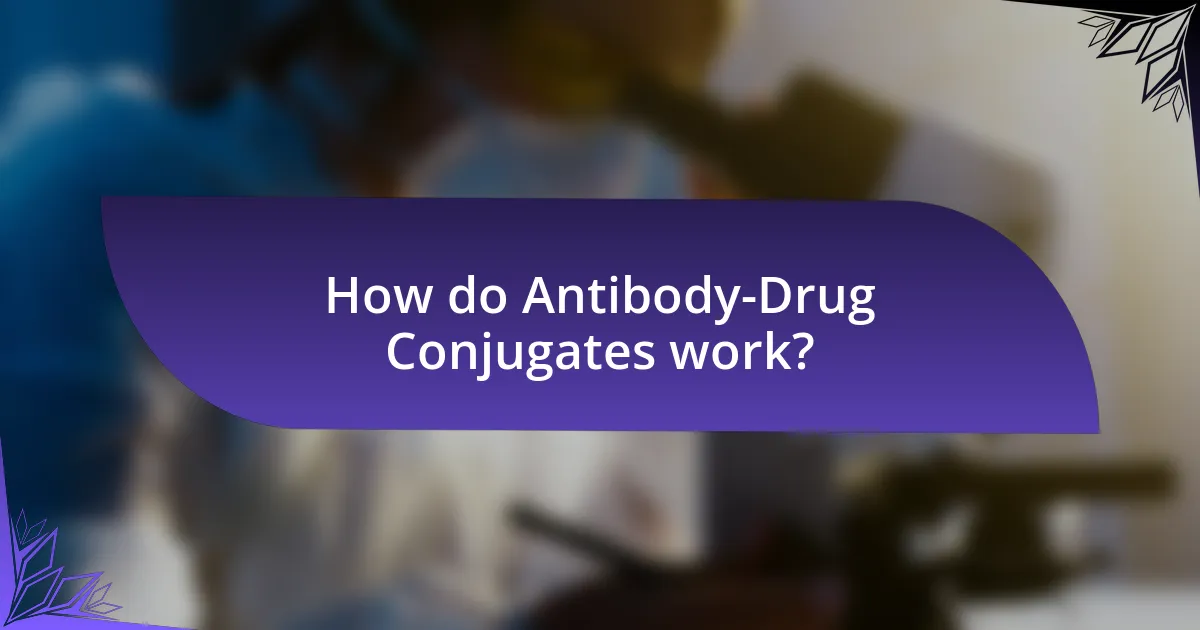
How do Antibody-Drug Conjugates work?
Antibody-Drug Conjugates (ADCs) work by linking a cytotoxic drug to an antibody that specifically targets cancer cells. The antibody binds to antigens present on the surface of the targeted cancer cells, facilitating the internalization of the drug into these cells. Once inside, the cytotoxic drug is released, leading to cell death. This targeted approach minimizes damage to healthy cells and enhances the therapeutic efficacy of the drug. Studies have shown that ADCs can significantly improve treatment outcomes in various cancers, demonstrating their effectiveness in selectively delivering potent drugs to tumor sites while sparing normal tissues.
What is the mechanism of action of ADCs?
Antibody-drug conjugates (ADCs) function by selectively delivering cytotoxic drugs to cancer cells through a targeted antibody that binds to specific antigens expressed on the surface of those cells. This mechanism involves the binding of the ADC to the target antigen, leading to internalization of the conjugate into the cancer cell. Once inside, the cytotoxic drug is released, typically through enzymatic cleavage or reduction, resulting in cell death. Studies have shown that ADCs can significantly improve therapeutic efficacy while minimizing damage to healthy tissues, as evidenced by clinical trials demonstrating enhanced tumor response rates compared to traditional chemotherapy.
How do ADCs deliver cytotoxic agents to target cells?
Antibody-drug conjugates (ADCs) deliver cytotoxic agents to target cells by utilizing monoclonal antibodies that specifically bind to antigens expressed on the surface of those cells. Once the ADC binds to the target cell, it is internalized through endocytosis, leading to the release of the cytotoxic agent inside the cell. This targeted delivery mechanism enhances the therapeutic effect while minimizing damage to healthy tissues, as evidenced by studies showing that ADCs can significantly improve the efficacy of chemotherapy in cancer treatment by concentrating the cytotoxic effects on malignant cells.
What role does the linker play in ADC functionality?
The linker in antibody-drug conjugates (ADCs) serves a critical role by connecting the antibody to the cytotoxic drug, ensuring targeted delivery to cancer cells. This connection allows the ADC to remain stable in circulation while facilitating the release of the drug upon internalization by the target cell. The effectiveness of the linker is demonstrated by its ability to maintain the integrity of the ADC until it reaches the tumor microenvironment, where it can be cleaved by specific enzymes or conditions, thereby releasing the drug to exert its therapeutic effect.
What factors influence the effectiveness of ADCs?
The effectiveness of antibody-drug conjugates (ADCs) is influenced by several key factors, including the choice of antibody, the linker technology, the drug payload, and the tumor microenvironment. The antibody must specifically target tumor-associated antigens to ensure selective delivery of the cytotoxic drug, which enhances therapeutic efficacy while minimizing off-target effects. Linker technology is crucial as it determines the stability of the ADC in circulation and its ability to release the drug within the target cells; stable linkers prevent premature drug release, while cleavable linkers allow for effective drug delivery upon internalization. The drug payload’s potency and mechanism of action also significantly impact effectiveness; highly potent cytotoxic agents can lead to improved tumor cell kill rates. Lastly, the tumor microenvironment, including factors such as hypoxia and heterogeneity, can affect ADC uptake and efficacy, as these conditions may alter the expression of target antigens or influence drug distribution.
How does the choice of antibody affect ADC performance?
The choice of antibody significantly impacts the performance of antibody-drug conjugates (ADCs) by influencing target specificity, internalization efficiency, and overall therapeutic efficacy. Antibodies with high affinity for their target antigens enhance the selective delivery of cytotoxic drugs to cancer cells, thereby increasing the ADC’s potency. For instance, studies have shown that ADCs utilizing antibodies that bind to overexpressed tumor antigens can achieve better tumor localization and reduced off-target effects, leading to improved safety profiles. Additionally, the internalization rate of the antibody-drug complex is crucial; antibodies that facilitate rapid endocytosis can enhance drug release within the target cells, maximizing cytotoxic effects. Therefore, the selection of the antibody is critical in determining the ADC’s effectiveness and safety in clinical applications.
What impact does the drug payload have on ADC efficacy?
The drug payload significantly impacts the efficacy of antibody-drug conjugates (ADCs) by determining the therapeutic potency and specificity of the treatment. A potent payload can enhance the cytotoxic effect on targeted cancer cells, leading to improved tumor regression and overall survival rates. For instance, payloads such as auristatins and maytansinoids have shown higher efficacy compared to less potent agents, as evidenced by clinical trials demonstrating greater tumor shrinkage and reduced off-target effects. The choice of payload, therefore, is crucial in optimizing ADC performance and achieving desired clinical outcomes.
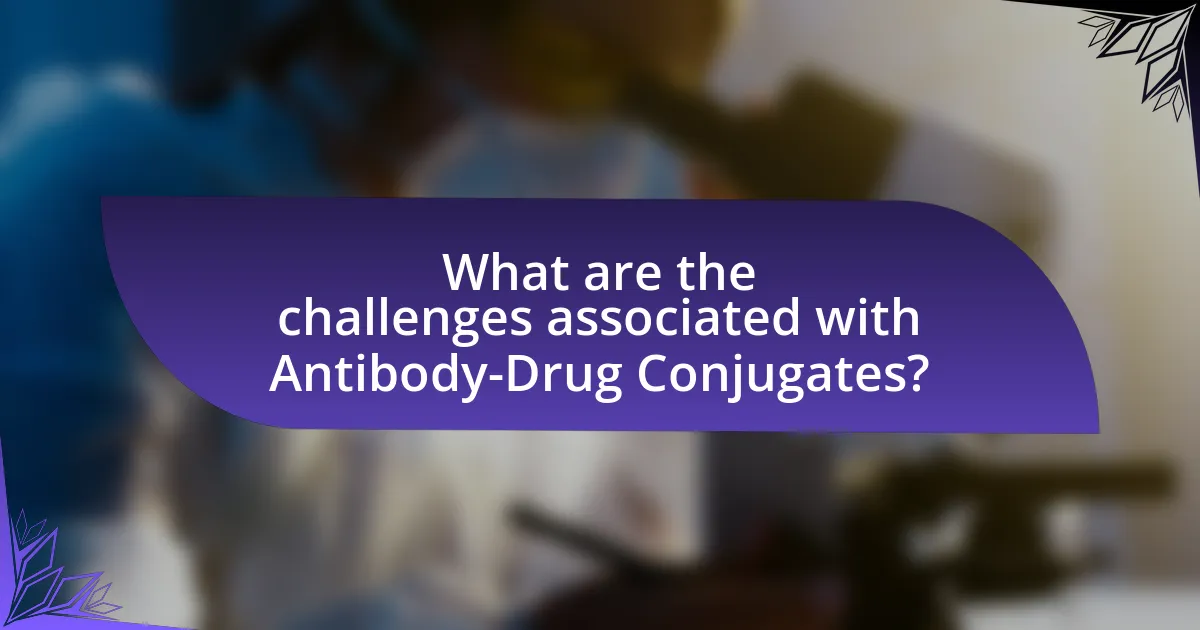
What are the challenges associated with Antibody-Drug Conjugates?
The challenges associated with Antibody-Drug Conjugates (ADCs) include issues related to specificity, toxicity, and resistance. Specificity is a concern because ADCs must selectively target cancer cells while sparing healthy tissues; failure to achieve this can lead to off-target effects and increased toxicity. Toxicity arises from the potential for systemic exposure to the cytotoxic drug component, which can cause adverse effects in patients. Additionally, cancer cells may develop resistance to ADCs through various mechanisms, such as altering target antigens or enhancing drug efflux, which can diminish the therapeutic efficacy of these treatments. These challenges highlight the complexity of developing effective ADCs for cancer therapy.
What are the common side effects of ADCs?
Common side effects of antibody-drug conjugates (ADCs) include nausea, vomiting, fatigue, and hematological toxicities such as neutropenia and thrombocytopenia. These side effects arise due to the cytotoxic agents linked to antibodies, which can affect both cancerous and healthy cells. Clinical studies have shown that approximately 30-50% of patients experience these adverse effects, highlighting the need for monitoring and management during ADC therapy.
How can the immunogenicity of ADCs be minimized?
The immunogenicity of antibody-drug conjugates (ADCs) can be minimized by optimizing the design of the antibody and the drug linker. Strategies include using humanized or fully human antibodies to reduce the likelihood of immune responses, selecting linkers that are stable in circulation but release the drug effectively within target cells, and ensuring that the drug payload is less immunogenic. Research has shown that humanized antibodies significantly lower immunogenicity compared to murine antibodies, as evidenced by studies indicating a reduced incidence of anti-drug antibodies in patients treated with humanized ADCs. Additionally, employing non-immunogenic drug payloads can further decrease the risk of eliciting an immune response.
What strategies are in place to overcome resistance to ADCs?
Strategies to overcome resistance to antibody-drug conjugates (ADCs) include optimizing drug delivery, enhancing target specificity, and utilizing combination therapies. Optimizing drug delivery involves improving the pharmacokinetics and biodistribution of ADCs to ensure effective targeting of tumor cells while minimizing exposure to healthy tissues. Enhancing target specificity can be achieved by developing novel linkers and payloads that are more effective against resistant cancer cell populations. Combination therapies, which involve using ADCs alongside other treatment modalities such as immunotherapy or chemotherapy, can help to circumvent resistance mechanisms by attacking cancer cells through multiple pathways. These strategies are supported by clinical studies demonstrating improved efficacy and reduced resistance in various cancer types when ADCs are used in conjunction with other treatments.
How is the development of ADCs evolving?
The development of antibody-drug conjugates (ADCs) is evolving through advancements in linker technology, payload optimization, and enhanced targeting strategies. Recent innovations have led to the creation of more stable linkers that improve the therapeutic index of ADCs, allowing for more effective delivery of cytotoxic agents directly to cancer cells while minimizing off-target effects. For instance, the use of cleavable linkers that release the drug in the tumor microenvironment has shown promise in increasing efficacy. Additionally, the optimization of payloads, such as the incorporation of novel cytotoxic agents, has expanded the range of cancers that ADCs can effectively target. Furthermore, enhanced targeting strategies, including the use of bispecific antibodies and engineered antibodies with improved binding affinities, are being explored to increase the specificity and effectiveness of ADCs. These developments are supported by clinical trials demonstrating improved outcomes in patients with various malignancies, indicating a significant evolution in the ADC landscape.
What are the latest advancements in ADC technology?
Recent advancements in Antibody-Drug Conjugate (ADC) technology include the development of next-generation linkers and payloads that enhance therapeutic efficacy while minimizing off-target effects. For instance, the introduction of cleavable linkers allows for more precise drug release within target cells, improving the therapeutic index. Additionally, novel cytotoxic agents, such as pyrrolobenzodiazepines, have shown increased potency compared to traditional chemotherapeutics, leading to better tumor response rates. These innovations are supported by clinical trials demonstrating improved outcomes in patients with various cancers, highlighting the potential of ADCs to revolutionize targeted cancer therapy.
How are clinical trials shaping the future of ADCs?
Clinical trials are crucial in shaping the future of antibody-drug conjugates (ADCs) by providing essential data on their efficacy, safety, and optimal dosing regimens. These trials enable researchers to evaluate the therapeutic potential of ADCs in various cancers, leading to the identification of specific biomarkers that predict patient response. For instance, the success of clinical trials for ADCs like trastuzumab emtansine has demonstrated improved outcomes in HER2-positive breast cancer, influencing regulatory approvals and clinical practice guidelines. Furthermore, ongoing trials are exploring novel combinations of ADCs with immunotherapies, which could enhance treatment efficacy and broaden the patient population benefiting from these advanced therapies.
What best practices should be followed when using ADCs?
When using antibody-drug conjugates (ADCs), best practices include ensuring proper dosing, monitoring for adverse effects, and selecting appropriate patient populations. Proper dosing is critical as it maximizes therapeutic efficacy while minimizing toxicity; studies have shown that incorrect dosing can lead to suboptimal outcomes or increased side effects. Monitoring for adverse effects is essential, as ADCs can cause unique toxicities that require timely intervention; for instance, hematological toxicities are common and should be regularly assessed. Selecting appropriate patient populations based on biomarker expression and tumor characteristics enhances the likelihood of treatment success, as evidenced by clinical trials demonstrating improved responses in patients with specific target antigens.
How can healthcare providers optimize ADC treatment plans?
Healthcare providers can optimize ADC treatment plans by personalizing therapy based on patient-specific factors such as tumor type, genetic markers, and previous treatment responses. Tailoring the selection of ADCs to the individual characteristics of the cancer can enhance efficacy and minimize adverse effects. For instance, studies have shown that patients with specific biomarkers, like HER2 overexpression, respond better to targeted ADCs, leading to improved outcomes. Additionally, regular monitoring of treatment response through imaging and biomarker assessments allows for timely adjustments to the treatment regimen, ensuring that the ADC therapy remains effective throughout the course of treatment.
What considerations should be made for patient selection in ADC therapy?
Patient selection in ADC therapy should consider tumor type, expression of target antigens, and patient health status. Tumor type is crucial as ADCs are designed to target specific cancer cells; for instance, trastuzumab emtansine is effective in HER2-positive breast cancer. The expression level of target antigens on tumor cells must be assessed, as higher expression correlates with better therapeutic outcomes. Additionally, the patient’s overall health, including organ function and prior treatments, influences tolerability and response to ADC therapy. These considerations ensure that the selected patients are most likely to benefit from the treatment, optimizing therapeutic efficacy and minimizing adverse effects.

